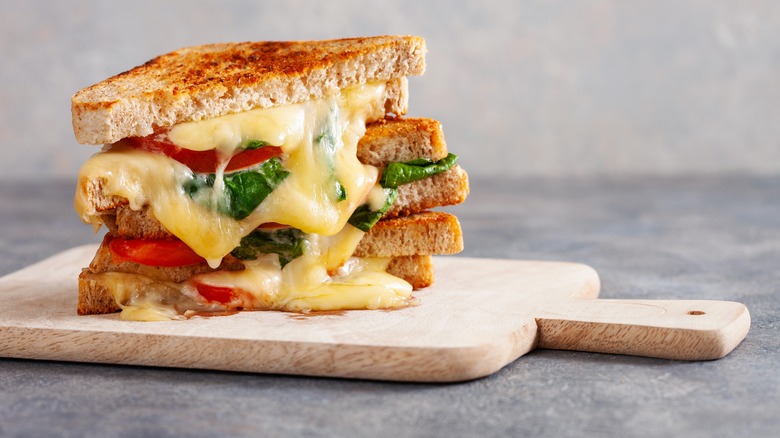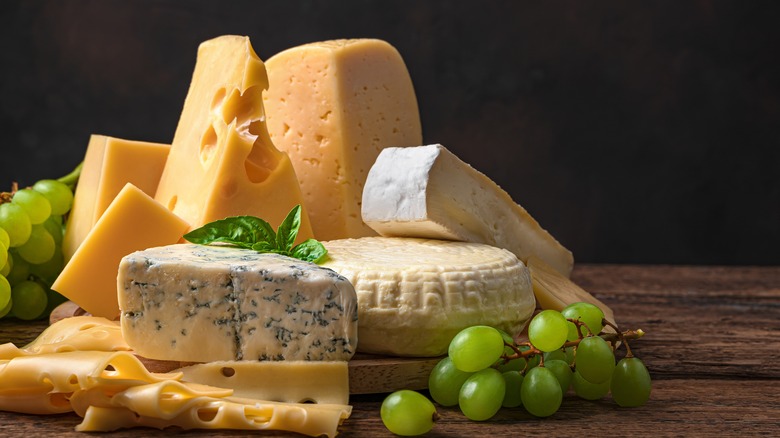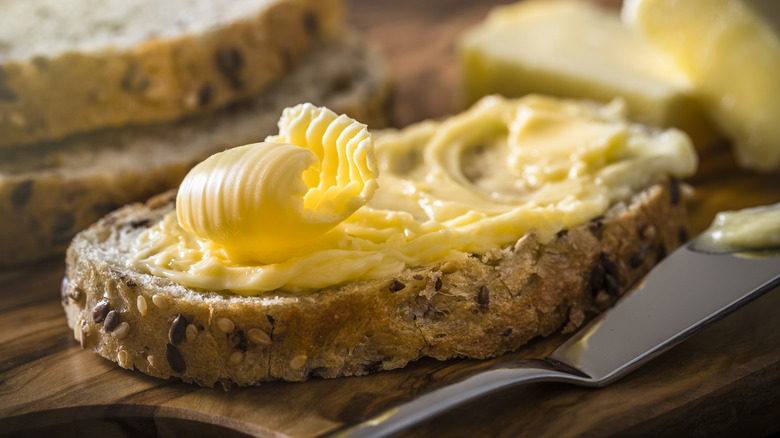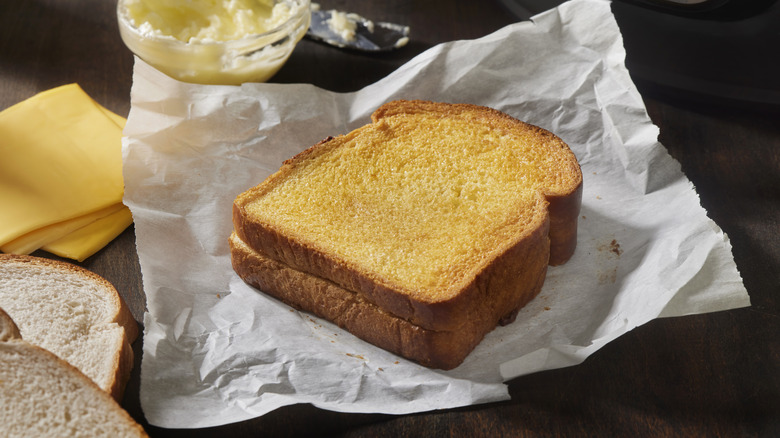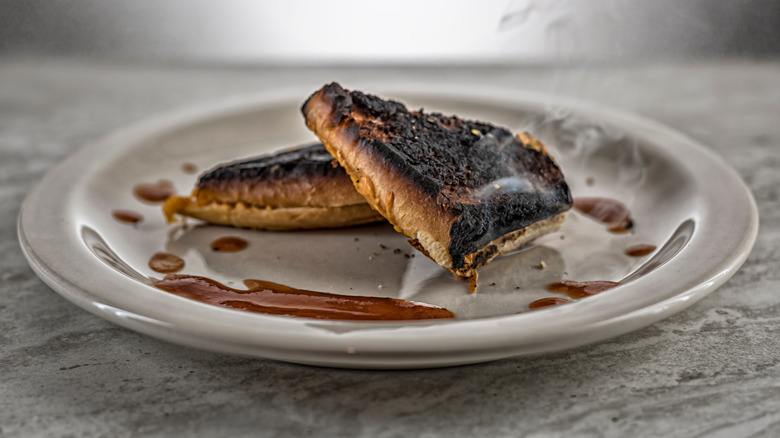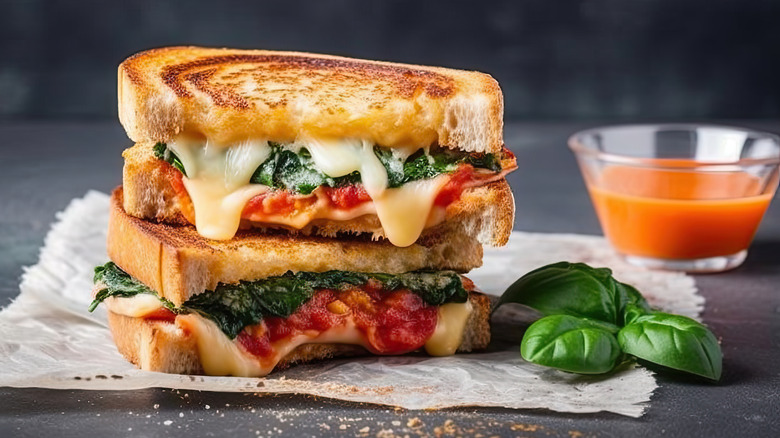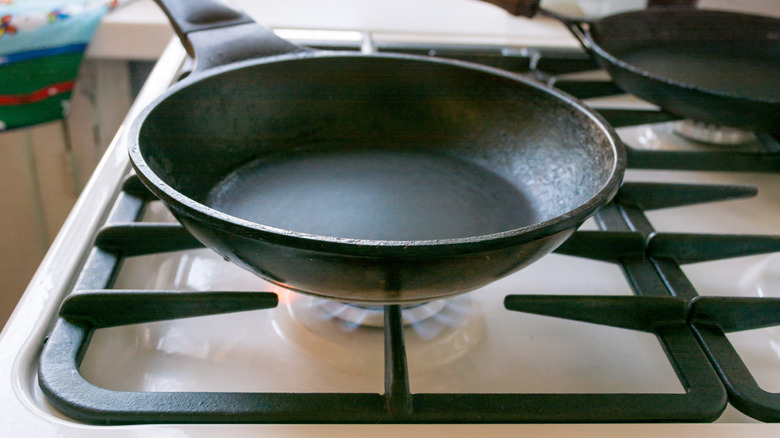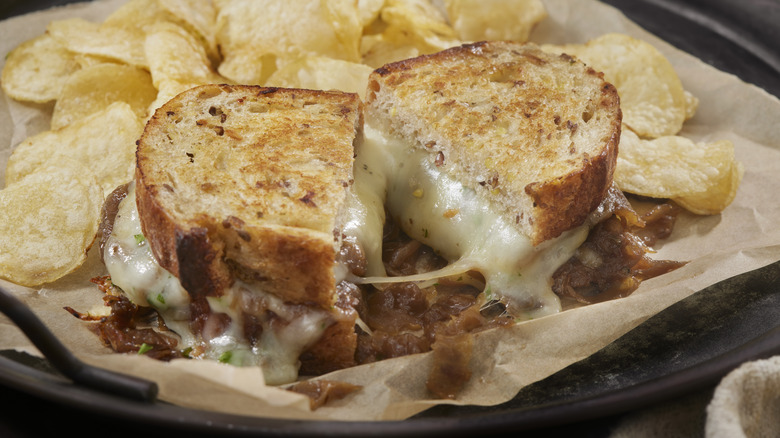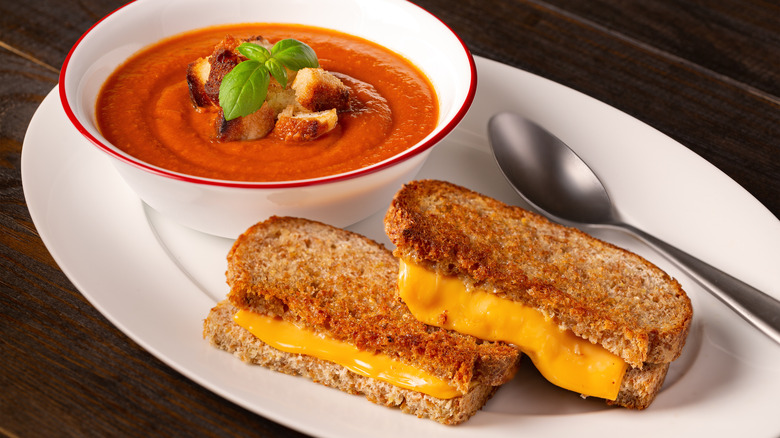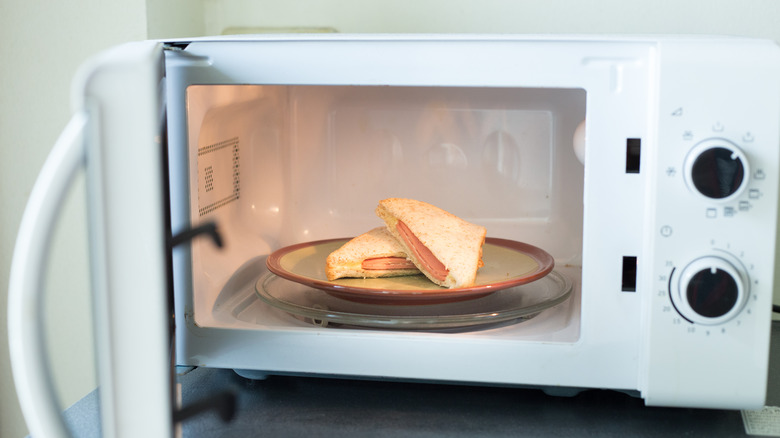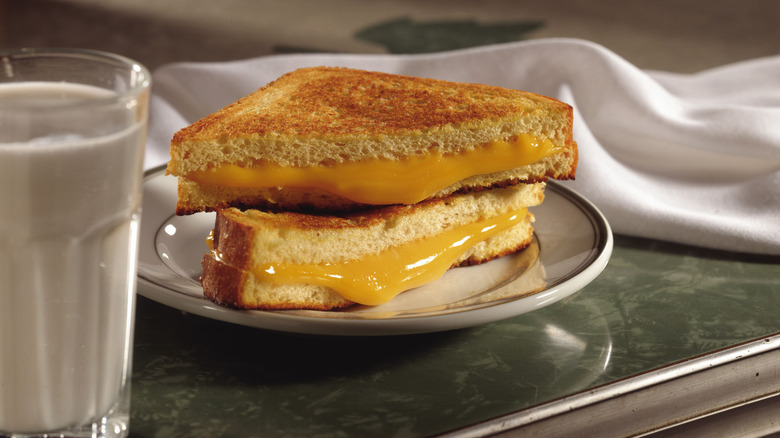False Facts About Grilled Cheese You Thought Were True
Let's face it, nothing beats a grilled cheese sandwich with its irresistibly gooey cheese and crisp toasted, golden-brown bread. This classic comfort food, often paired with a steaming bowl of hearty soup, appeals to many people. But despite its popularity, numerous myths about making the perfect grilled cheese abound.
Some people claim that only traditional cheeses can create the best oozy melt, while others think slathering more butter on the bread results in a crunchier, extra golden crust. Some even dismiss grilled cheese as a breakfast option or assert that only white bread can bolster its rich flavor and satisfying texture. These widespread beliefs have hung around in kitchens and across dining tables for years, sparking cheesy debates among food enthusiasts everywhere.
But how true are these grilled cheese tales? Are they based on facts or just culinary myths? It's time to melt away these common misconceptions and discover the truth about this delicious comfort food. Follow along as we reveal the alleged facts you've always assumed were true about your favorite cheese sandwich — prepare to be amazed by what you learn.
False: Only cheddar and American cheese melt well
We all know that cheddar and American cheese are the go-to choices for ardent cheese fans who make grilled cheese sandwiches, since they melt into a smooth and creamy layer that creates a satisfying comfort food. But this narrow view overlooks the plethora of cheeses that can improve grilled cheese sandwiches with their varied flavors and textures.
In reality, many other cheeses excel in melting superbly and even boast distinctive tastes. Gruyère, a hard, aged Swiss cheese with a nutty and sweet flavor, melts beautifully at about 150 F. Brie is decadently creamy and creates a velvety layer, while fontina, with its buttery richness and earthy taste, goes gooey at just 140 F. And don't forget the easy-melting, creamy, and flavorful cheeses, provolone and havarti, that add rich complexity to the sandwich.
Trying new options for your grilled cheese sandwiches debunks this myth and enhances your culinary experience. Despite their tangy and salty taste, some cheeses, such as Gorgonzola, have a buttery melt that adds a hint of spiciness to your beloved sandwich. Experimenting with different cheeses allows you to discover new combinations and savor various gourmet flavors.
False: Butter is the only spread for a crispy crust
If you think butter is the only way to get a crispy crust on your grilled cheese, think again. Butter is a classic, of course, hailed for its boatloads of saturated fat, which nicely browns the bread, giving it that crunchy texture we love. Plus, it's easy to find and use, making it the perfect choice for many grilled cheese fans. But the melty truth is that it's not the only fat that can achieve a photo-worthy golden, crispy crust.
Surprisingly, mayonnaise does a great job. Its high oil-based fat content mimics butter's browning power and makes it easy to spread on bread even when cold. Its light and tangy sweetness adds a subtle depth to your beloved sandwich, enhancing its cheesy flavor. Virgin olive oil is another handy option to try. It steps in as an excellent choice for a stable fat that browns slower than butter and has a slightly higher smoke point. That means it can handle higher heat without burning, so your bread will cook slowly and evenly, producing a crispy and tasty golden crust.
False: White bread is the king of grilled cheese
We've all grown up with white bread as the go-to classic for grilled cheese sandwiches. The kitchen staple crisps perfectly and softens evenly when grilled, making it a convenient choice for many people. But it turns out that this preference stems more from familiarity and nostalgia than culinary superiority. The cheese-pulling truth? The best bread for your grilled cheese sandwich depends on your taste and the cheese you use.
Sure, white bread works, but slices of nutty sourdough and whole-grain bread elevate the game and add depth. They deliver a tangy flavor and textured crunch absent in white bread while packing more fiber and protein. Rye bread, with its distinctive taste, pairs well with strong cheeses such as Gruyère or aged cheddar, giving your sandwich a gourmet appeal. Artisan breads like crusty ciabatta or pillowy focaccia introduce unique textures and flavors, elevating your grilled cheese sandwich.
Your choice of bread can enrich both the flavor and nutrition of your grilled cheese sandwiches. Ultimately, your taste buds are the best judges. It's all about pairing the right bread with your specific cheese type and taste preferences, to turn a traditional grilled cheese into a more refined, satisfying comfort food.
False: High heat is best for quick cooking
We often think high heat works best when making a grilled cheese sandwich. After all, it seems logical that cranking up the heat crisps the bread and melts the cheese faster. But this approach often burns the bread before the cheese melts, leading to a ruined sandwich with a tough, rubbery texture that's far from the delightful flavor burst we're going for.
The secret to a perfectly grilled cheese is not in speed but in patience and proper temperature control. Making your sandwich on medium-low heat ensures even toasting without charring the bread, gently melting the cheese to create that irresistible ooey-gooey delight. Low and slow heat keeps the bread soft and fluffy, leading to a golden, crunchy crust. But more importantly, it gives the cheese time to melt evenly, creating that stretchy pull we all love.
Crafting the perfect grilled cheese is about balancing textures and flavors. A medium flame and a bit of patience can transform your grilled cheese from good to great, helping you avoid the pitfalls of high heat and delivering each bite as a harmonious blend of crispiness and gooeyness.
False: Grilled cheese must be eaten immediately
The culinary myth that grilled cheese must be savored immediately is rooted in the belief that the sandwich's quality rapidly declines once it's ready. Fresh off the pan, the cheese melts perfectly while the bread maintains a crispy crunch. Wait too long and you're left with a soggy sandwich, a far cry from what you desire. However, this notion overlooks the possibility of reviving a grilled cheese sandwich to nearly its just-cooked glory with some know-how.
The secret lies in how you reheat the sandwich. If you're not ready to eat it right away, no problem. Simply wrap the sandwich in aluminum foil to retain the moisture and prevent the cheese from drying out during reheating. Then, crank up your oven set to a warm 350 F, place your sandwich on a baking sheet, and slide it into the oven. This method not only reheats the cheesy sandwich but also enhances its flavors and helps achieve a perfect crispy texture.
The oven's heat crisps the bread anew, and the cheese melts again inside its snug wrap. Give the sandwich 10 to 15 minutes, flipping it halfway through, and voilà. You have a grilled cheese that defies the "eat immediately" myth. A brief stint in the oven or the toaster oven revives your beloved sandwich, making it as delightful as when you first made it. This common myth, like the gooey cheese in your now perfectly reheated sandwich, quickly melts away under scrutiny.
False: Grilled cheese is unhealthy
Grilled cheese sandwiches often carry the label of being unhealthy, mainly due to their high saturated fat and calorie content. A grilled cheese sandwich is typically made with bread and cheese. One ounce of cheddar cheese boasts 120 calories and 6 grams of saturated fat and you may very well use double that amount in a sandwich. Saturated fat is associated with elevated LDL cholesterol levels (the harmful type), according to Gabrielle McPherson, MS (via Healthline). Furthermore, these beloved sandwiches usually fall short of providing essential nutrients, such as dietary fiber.
But this view is only partially accurate. While grilled cheese is not a superfood, describing it as an unhealthy choice overlooks its nutritional benefits. Cheese is a valuable source of calcium, protein, and various vital minerals and vitamins. When deliberately paired with whole-grain bread, a grilled cheese sandwich can offer increased fiber and nutrients.
Also, the importance of portion control and consumption frequency can't be overstated. Consumed in moderation and as part of a balanced diet, grilled cheese, like any food, can be a healthy option. The trick lies in diversifying your diet to include a range of healthy choices. Opting for whole-grain bread, incorporating veggies, or selecting lower-fat cheese varieties can elevate the meal's nutritional value. Far from being a health risk, grilled cheese is an iconic comfort food that, can seamlessly fit into a healthy lifestyle with some thoughtful upgrading.
False: Cast iron pans are the only option for grilled cheese
Many regard cast iron pans as the sole option for cooking grilled cheese, celebrating their classic look and consistent heat. Popularly known for durability and heat retention, cast iron is seen as ideal for achieving a golden, crispy crust on beloved cheese sandwiches. This pervasive notion likely stems from traditional cooking methods and chefs' respect for cast iron.
However, this is not entirely true. While cast iron pans excel in making grilled cheese, they're not the only practical option. Other types of pans can yield the same delicious results. For instance, nonstick skillets, a popular alternative, require less oil or butter, allowing you to cook at lower temperatures without the sandwich sticking to the pan. Aside from the easy cleanup, this type of pan is beneficial for those seeking a lower-fat option or who prefer to avoid cast iron.
Stainless steel pans, another great alternative, may not distribute heat as evenly as cast iron, but they can make a satisfactory grilled cheese sandwich. The key is maintaining a low heat and monitoring the cooking process closely to prevent burning. Also, covering the pan can promote even cheese melting without overdrying the bread. While a cast iron pan is an excellent choice for making grilled cheese, it's not the only one.
False: The more cheese, the better
We've all been there, staring at a package of cheese in the fridge, desperately wishing for a melty mountain of goo to fill our grilled cheese sandwich dreams. It's easy to fall for the myth that more cheese is better, especially if you adore cheese's stretchy properties. But let's get real. A bulging behemoth sandwich overflowing with cheddar may feel epic, but it leaves you with a greasy, soggy, cheese-leaking disaster that disrupts the ideal balance between bread and cheese.
Instagram-worthy grilled cheese sandwiches are defined by their crispy exterior and tender interior, a balance disrupted by too much cheese. Overloading cheese impedes proper melting and creates a lumpy, inconsistent texture. Grilled cheese is not about how much cheese you use but how well it complements other flavors. A mix of different cheeses in modest amounts can elevate the sandwich's flavor beyond what a single cheese type offers.
Then again, the bread type and additional ingredients, such as fresh herbs or spreads, can elevate the sandwich's flavor. So, don't fall for the myth that more cheese is better. A well-rounded combination of quality ingredients — such as golden-brown bread, mayonnaise, or butter — rather than an overload of cheese is crucial for a superior grilled cheese experience.
False: Only tomato soup pairs well with grilled cheese
It's easy to think that tomato soup is the only soup that goes well with grilled cheese because this iconic pairing is often hailed as the ultimate comfort meal. However, this idea comes from tradition, not from any cooking rule. Tomato soup and grilled cheese offer a perfect balance of flavors: Tomato soup is acidic and sweet, while grilled cheese is rich and savory. Also, many people have fond memories of this combination from their childhood, making it a timeless favorite across generations.
But tomato soup is not the only option; you can pair grilled cheese sandwiches with soups that add different tastes and textures to your meal. For instance, you can try a creamy butternut squash soup for a sweet, earthy-flavored meal. Or you can serve a classic chicken noodle soup to make your meal more filling and satisfying. You can even experiment with a spicy black bean soup to contrast with the smooth and mild cheese.
Different cultures and places have their unique ways of pairing grilled cheese, given it's a versatile dish that pairs well with various soups. Don't limit yourself to just tomato soup, and explore new recipes to discover flavor combinations you enjoy.
False: Grilled cheese is strictly a kid's meal
Grilled cheese, often featured on kids' menus in restaurants, is widely regarded as a children's meal. It's viewed as a simple and easy option for young diners with less adventurous palates, alongside other popular items like chicken nuggets and mac and cheese. Sadly, this view overlooks the sandwich's culinary versatility and widespread appeal.
People of all ages cherish grilled cheese as a comfort food. The basic bread and cheese ingredients provide a blank canvas of endless creativity, making it a perfect platform for experimentation. Adults seeking a more sophisticated twist on the classic sandwich can enjoy gourmet versions with artisan bread, various cheeses, and additional ingredients like avocado or tomato.
Grilled cheese has even transcended its basic roots and found a place in upscale restaurants and foodie culture. The proliferation of gourmet grilled cheese creations and lively discussions about it on platforms like Reddit bear testimony to its popularity. Far more than just a kid's meal, grilled cheese has evolved and reinvented itself over time, catering to a wide range of tastes and preferences. It remains a universally beloved comfort food that can be savored in its simplest form or more gourmet variations.
False: Grilled cheese doesn't freeze well
Another pervasive myth in the culinary world is that grilled cheese sandwiches don't freeze well. The concern about their texture and taste after thawing is a widespread misconception worth debunking. Grilled cheese sandwiches can effectively be frozen if they're prepared and stored properly. Although low temperatures may slow down the ripening process that often occurs in the refrigerator, most cheese used for cooking can withstand the freezer.
As for bread, the freezing process may slightly change its texture, but this can be easily fixed by properly reheating it or toasting it to restore its desired crunchiness and warmth. First and foremost, it's important to properly freeze your cheese sandwich. Store it in a freezer bag and remove as much air as possible to keep it fresh for up to three months.
Within this time frame, the change in quality is generally minimal. Some people find freezing the sandwich convenient because it allows for meal preparation in advance, turning a quick bite into an even quicker one. Don't let this myth discourage you from freezing your beloved sandwich. With the right approach, it's not only feasible but also practical, ensuring that you always have a delicious meal on hand.
False: Grilled cheese can't be a breakfast food
So you think grilled cheese is strictly a lunch or dinner food? Many people believe so, too, because of traditional breakfast conventions. We're used to eating foods like pancakes, eggs, cereal, and toast for breakfast, while grilled cheese is often seen as a lunch or dinner option. This idea is reinforced in restaurant menus and cultural portrayals, where grilled cheese is rarely listed as a breakfast dish.
But upon closer scrutiny, this belief doesn't hold up. Breakfast choices vary widely across the globe and are subject to personal preferences. There are no strict rules that define what should be eaten for breakfast, and a grilled cheese sandwich can be an excellent breakfast. It's quick to make, and when prepared with whole-grain bread and a side of fruits or vegetables, it offers a balanced mix of carbohydrates, protein, and fats. Plus, it's warm and comforting, making it an ideal start to the day.
Any food can be suitable for breakfast — choose what you like, including grilled cheese, but keep an eye on your calorie intake. The key lies in how the breakfast is prepared and what it's served with. Opting for healthier ingredients, such as whole-grain bread and low-fat cheese, can transform it into a nourishing morning meal. Don't hesitate to indulge in a grilled cheese sandwich for breakfast; it's both delectable and fulfilling.
